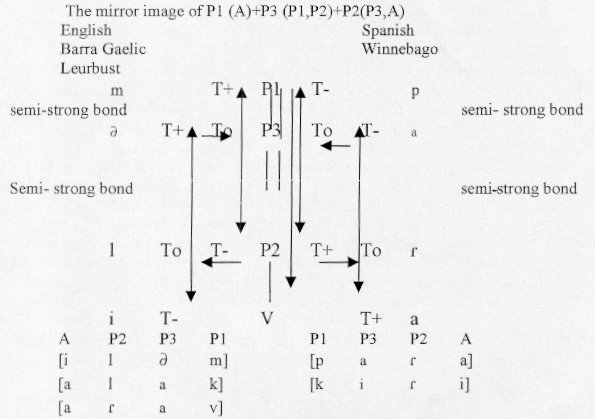
5.6 Unifying svarabhakti constructions
I have suggested that the morphosyntax and syntax of these constructions may derive from a set of simple combinatorial, integrational and stabilising mechanisms which apply simultaneously and non simultaneously and whose effects are discussed above. We can represent the final result of the application of combinatorial, integrational and stabilising mechanisms in a timed sequence using a hierarchical tree à la Chomsky (28) for Spanish and Winnebago (García-Bellido 1997). The stereo integration in (35) is used twice in a reciprocal Predication in English, Barra Gaelic, Leurbust, Winnebago and Spanish.
| (35) | |
 |
English, Barra Gaelic and Leurbust, and Spanish and Winnebago are two sets of languages which are the mirror image of each other. The difference is minimal: in English P3 stabilises P2 before (T-) and P1 after (P+), while in Spanish it is the reverse. P2 and P3 integrate reciprocally in ball these languages. The resolution of svarabhakti which has not bound with the Place of Articulation of a Vocoid is a shwa (English), while the resolution of a svarabhakti which has bound with the Place of articulation of a Vocoid in the construction is a mirror resolution Spanish, Winnebago, Barra Gaelic and Leurbust.
| (36) | |
 |
Failing to control combination, integration, stabilisation and resolution in a syntactic, morphosyntactic or
morphological way, it is suggested here, may produce aphasias (Caplan 1999).
Volumen 22 (2005) ISSN: 1139-8736 |